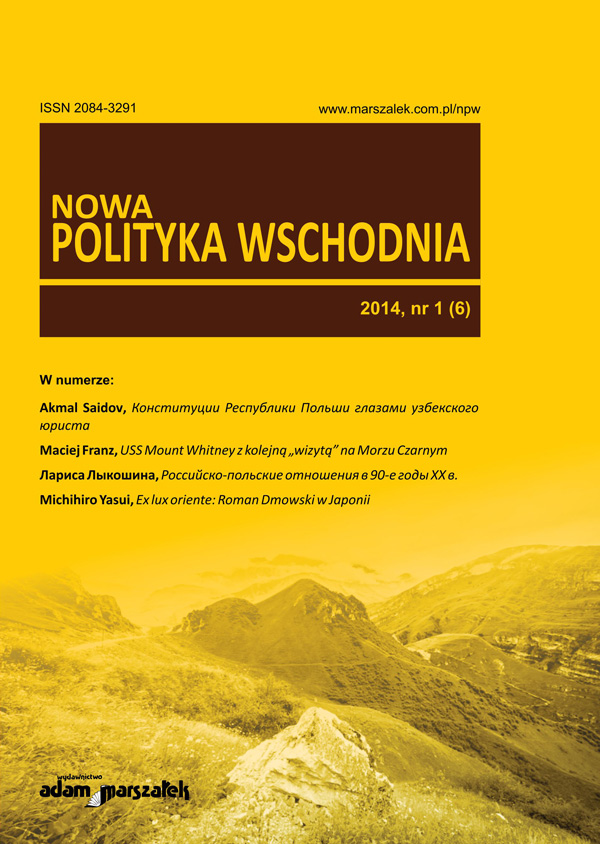Национальное самосознание и интеграционные процессы лужицких сербов в Германской империи
Часть I: От средневековья до первой миров войны (до 1914 г.)
National identity and integration processes of the Sorbs in German Empire. Part I: From the Middle Ages to the First World War (until 1914)
Author(s): Dariusz MatelskiSubject(s): History, Middle Ages, Modern Age, Recent History (1900 till today), Ethnic Minorities Studies
Published by: Wydawnictwo Adam Marszałek
Keywords: Sorbs;German Empire;evangelicalism;Reformation;Lusatia;national identity
Summary/Abstract: The Slavs came from the steppes of Eastern Europe to Balkan Peninsula in the first half of the 1st millennium A.D. At the turn of the 6th century some of the tribes, looking for new places to settle, arrived at the area between the Elbe and Oder– occupying an area abandoned by Germanic tribes, who moved to the Scandi-navian Peninsula – and were called Wends. Southern Slavs invaded and settled in Lusatia and reached the Saale. In the middle of the 9th century there were al-most 50 Slavic settlements in Lusatia under the rule of Prince Derwan, an ally of Samo. At the turn of the 10th century, the Sorbs came under the influence of the Great Moravia (822–895), which adopted Christianity as early as the 9th century (831), and then Bohemia (895–1018), and from 1002 Poland (Christian since 965) tried to take control over the area. Boleslaw I of Poland invaded Lusatia and won it in the Peace of Bautzen (1018). In the Reformation period, Sorbian peasants and common people massively supported the teachings of Martin Luther, although he was opposed to translating the Bible into Slavic. Evangelicalism proved to be ben-eficial for the Sorbian national culture. It influenced its revival and strengthen-ing. The University of Wittenberg became Sorbian cultural center, with its rector between years 1559–1576 being a doctor of Sorbian origin – Kasper Pauker fromBautzen. What strengthened the Sorbian national identity at the turn of the 19th century was the activity of Moravian Church (seeking to transform Lutheranism in people’s church), which was then settled in Upper Lusatia in Herrnhut, Niesky and Kleinwelka. At the turn of the 20th century the number of Sorbs in Germany decreased to about 157 000 people, out of whom as many as 10 100 lived outside Lusatia (including 4147 in Saxony – but without Lower Lusatia, 2687 in Westphalia, 1521 in Rhineland, 847 in Berlin and 898 in other areas of the German Em-pire). The language widely used in Lusatia was Sorbian with its Lower and Upper dialect. The basis of the national activities of the Sorbs in Germany was “Serbian House” founded on 26 September 1904 in Bautzen to serve as a library, museum, bank, bookshop and publisher. The outbreak of World War I in the summer of 1914 gave hope to the Slavs to establish their own countries.
Journal: Nowa Polityka Wschodnia
- Issue Year: 6/2014
- Issue No: 1
- Page Range: 216-240
- Page Count: 25
- Language: Russian

